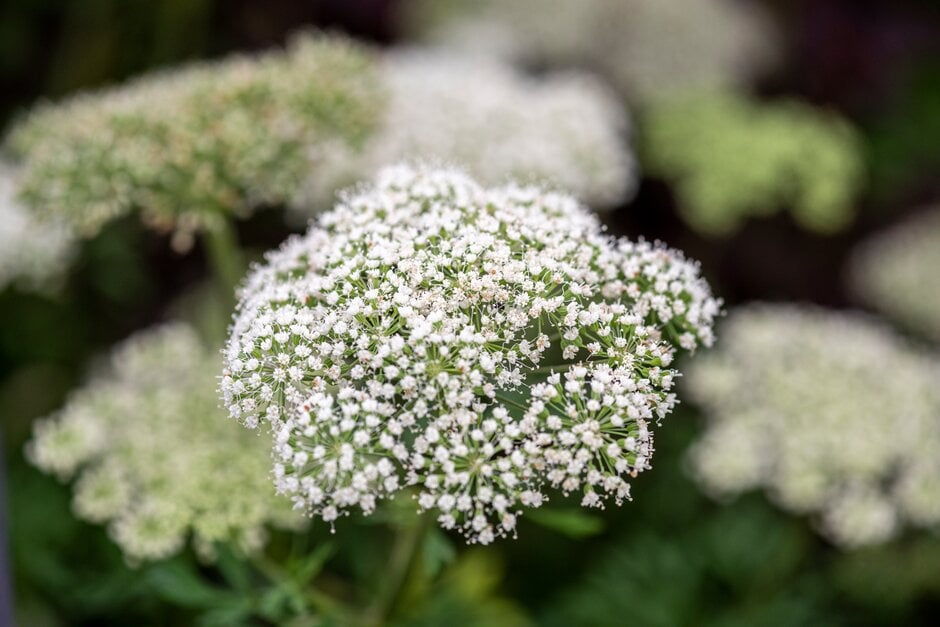Cenolophium denudatum
Baltic parsley
A fast-growing, semi-evergreen, clump-forming perennial reaching a height of around 150cm, with very finely divided dark green foliage. Purple stems above the foliage hold masses of flat umbels of greenish-white flowers in June and July
Size
Ultimate height
1–1.5 metresTime to ultimate height
2–5 yearsUltimate spread
0.1–0.5 metresGrowing conditions
Moisture
Moist but well–drainedpH
Acid, Alkaline, NeutralColour & scent
| Stem | Flower | Foliage | Fruit | |
| Spring | Purple | Green | ||
|---|---|---|---|---|
| Summer | Purple | Green White | Green | |
| Autumn | Purple | Green | ||
| Winter | Green |
Position
- Full sun
- Partial shade
Aspect
South–facing or East–facing or West–facing
Exposure
Exposed or Sheltered Hardiness
H6Botanical details
- Family
- Apiaceae
- Native to GB / Ireland
- No
- Foliage
- Semi evergreen
- Habit
- Bushy
- Genus
Cenolophium are deciduous perennials with finely divided, triangular leaves and domed, compound umbels of many small white flowers
- Name status
Correct
- Plant range
- Europe, Asia
How to grow
Cultivation
Grow in any moist, but well-drained soil in sun or partial shade
Propagation
Propagate by seed sown in containers in a cold frame in autumn or spring. Can also be propagated by root cuttings in mid-winter
Suggested planting locations and garden types
- Cottage and informal garden
- Prairie planting
- Wildlife gardens
- City and courtyard gardens
- Gravel garden
- Mediterranean climate plants
- Cut flowers
- Flower borders and beds
Pruning
No pruning required. Cut back foliage at the end of the season
Pests
Generally pest-free
Diseases
Generally disease-free
Get involved
The Royal Horticultural Society is the UK’s leading gardening charity. We aim to enrich everyone’s life through plants, and make the UK a greener and more beautiful place.
